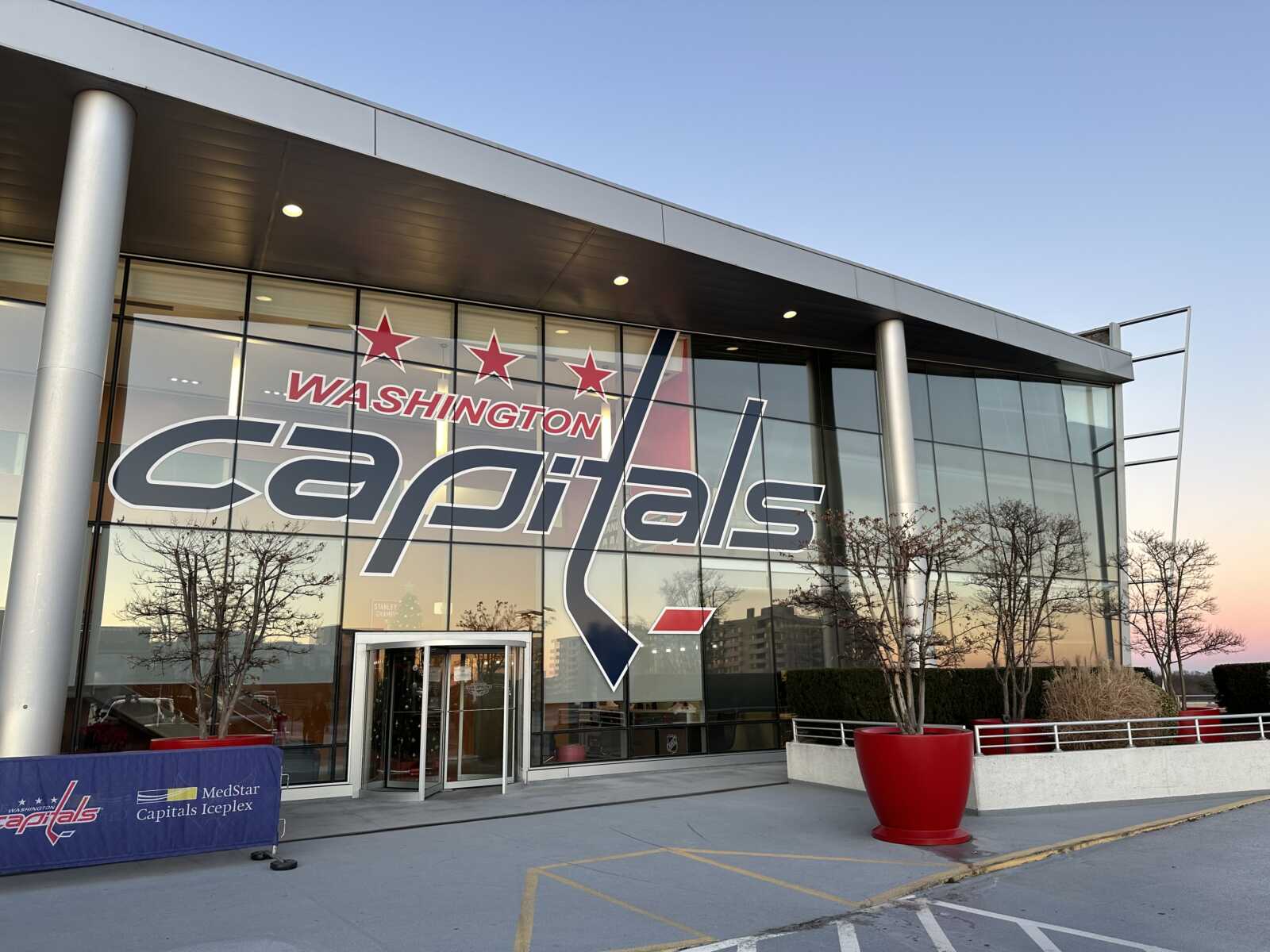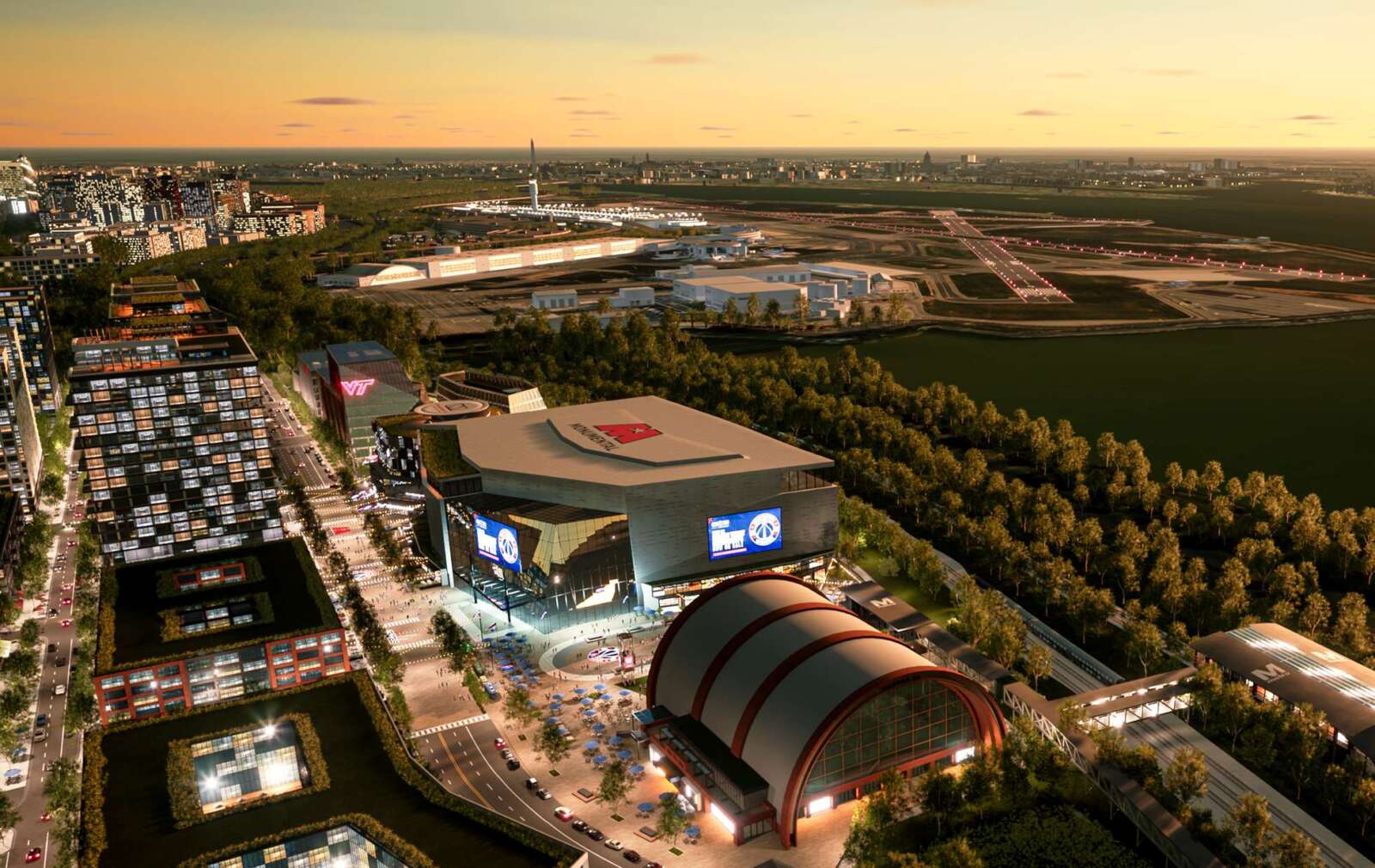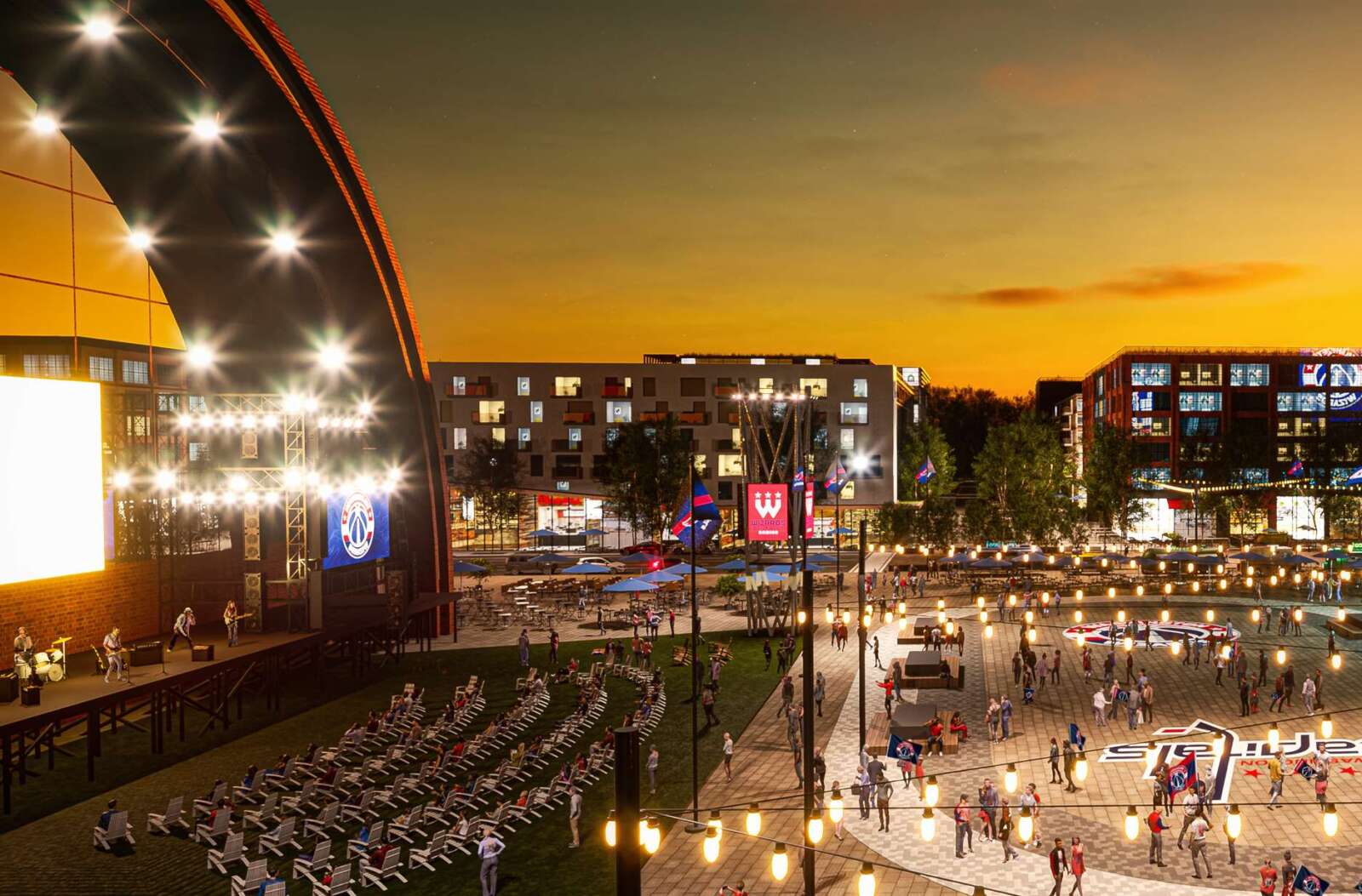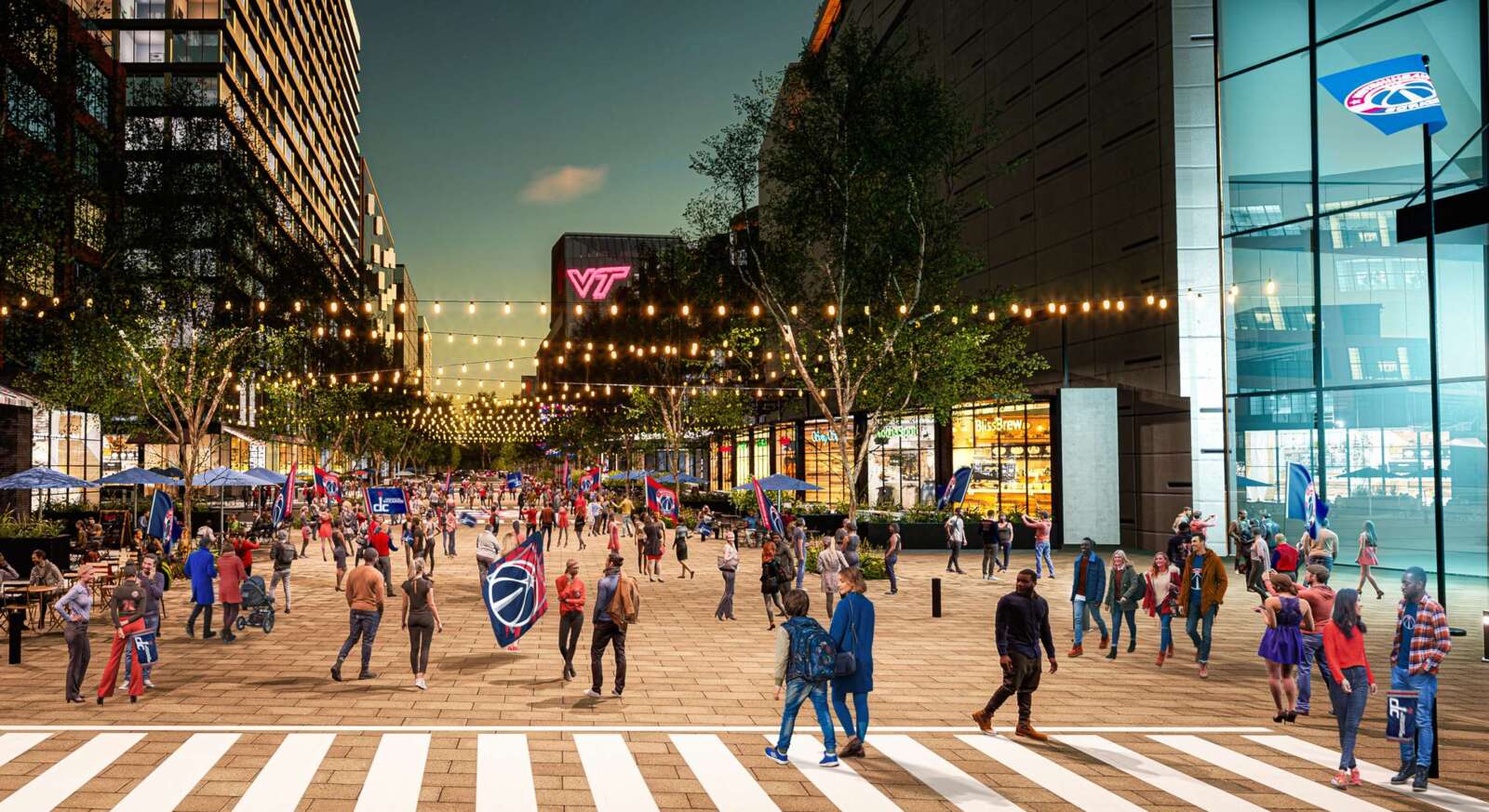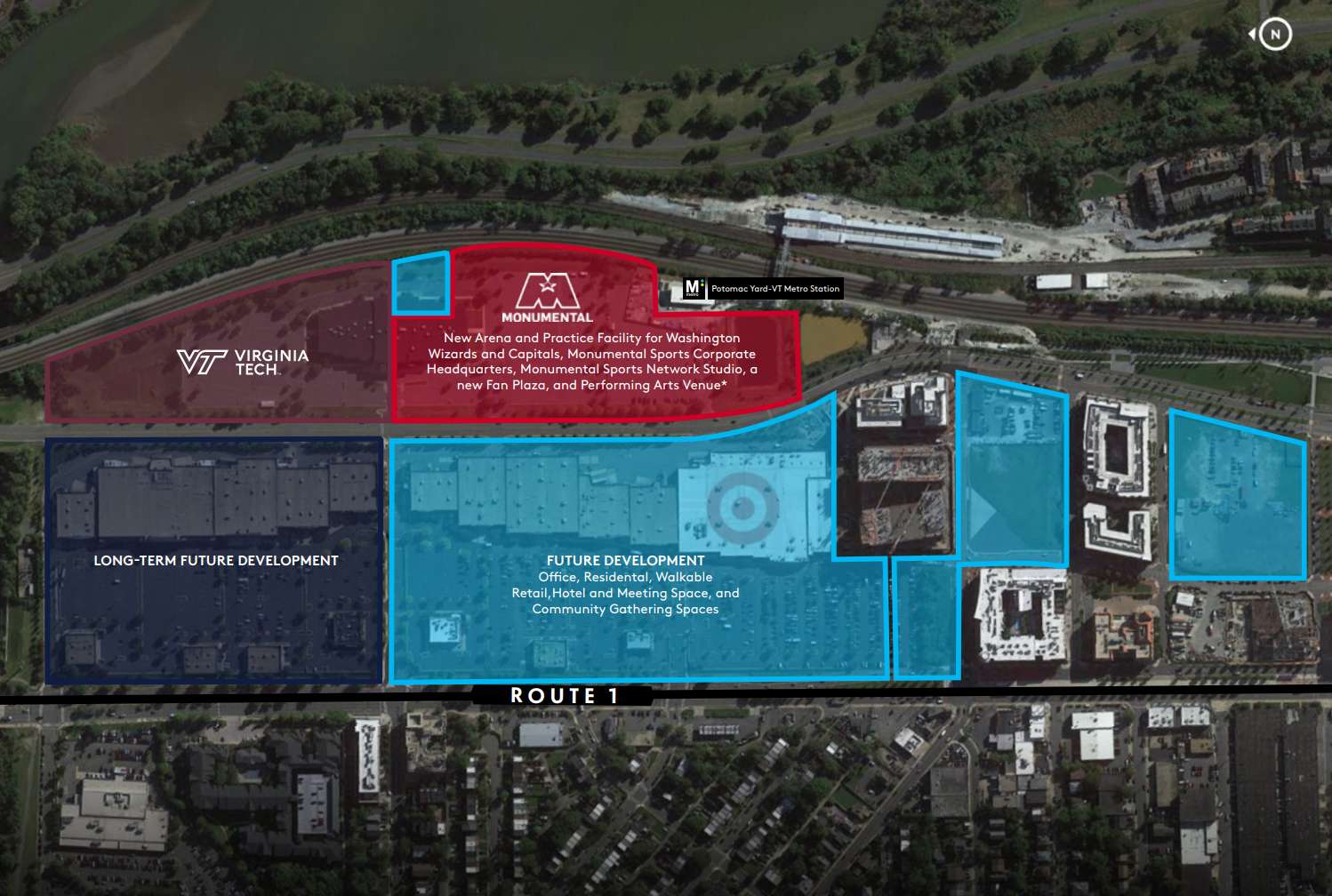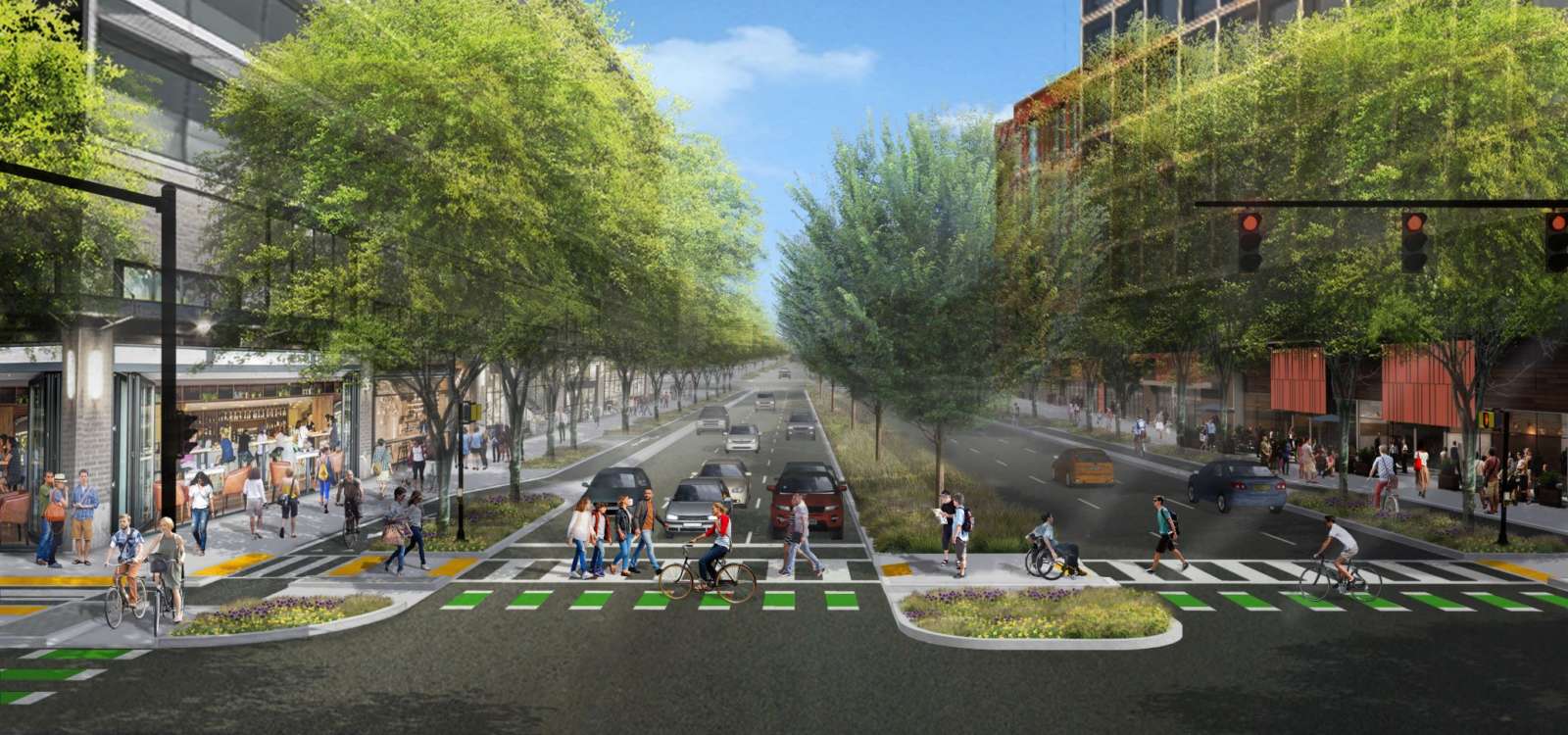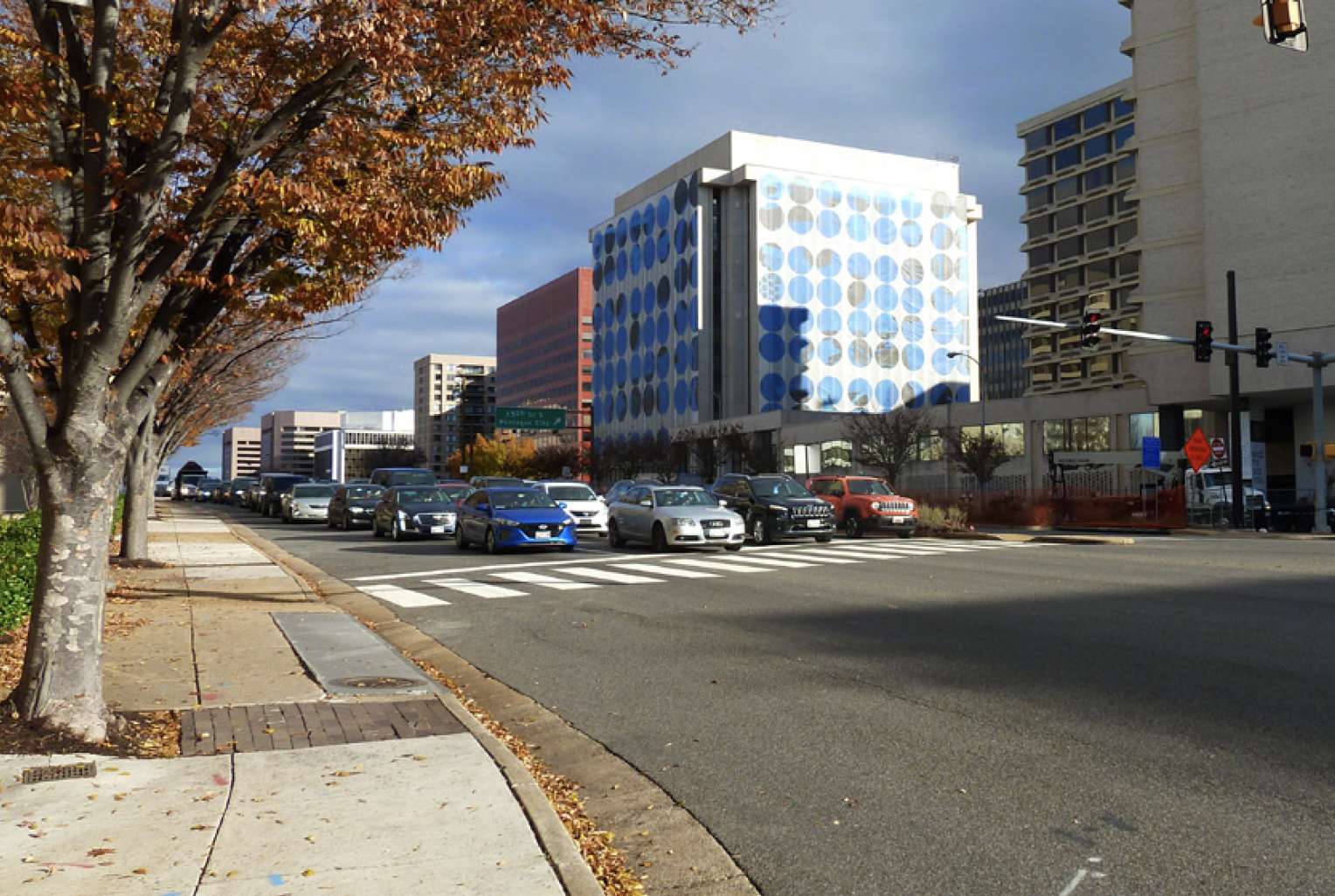Ballston might remain the place where the Washington Capitals practice if everything goes to plan and the hockey team begins playing games in a newly announced sports arena in Potomac Yard.
The new arena for the Caps and Washington Wizards, as well as a concert venue, could open as soon as 2028 in the Alexandria neighborhood already seeing heavy investment, including a new Metro station and Virginia Tech’s forthcoming Innovation Campus.
Gov. Glenn Youngkin, Monumental Sports & Entertainment owner Ted Leonsis, the city of Alexandria and developer JBG Smith officially confirmed the murmurings of a move today (Wednesday), to which county officials and business leaders reacted with excitement.
Arlington County Board Chair Christian Dorsey called the news an “excellent opportunity for Arlington to continue to partner with Alexandria” and, in a statement, said that “it further cements our region among the world’s most innovative and dynamic places to live, play, and do business.”
But whether the Caps continue to practice at MedStar Capitals Iceplex, adjoining the Ballston Quarter mall, is just one of the moving pieces with impacts on Arlington, should the project move forward.
Another concern — top-of-mind for residents around Richmond Hwy (Route 1) — is what the new facility will mean for state plans to bring the key north-south artery to grade, which was part of a suite of transportation projects promised if Amazon settled in Pentagon City.
In today’s announcement, the expansion into Alexandria did not explicitly mention relocating the Capital’s practice facility from Ballston, though it was included in a map of the planned development.
Arlington County says Monumental has indicated it intends to negotiate a renewed lease in Ballston — even with the planned arena in Potomac Yard — as it prefers to separate practice facilities and administrative offices from their arena.
A Monumental spokesperson told ARLnow where the Caps practice is one of many details that still need to be finalized, emphasizing that the Iceplex in Ballston is a state-of-the-art facility. The spokesperson said Monumental might renovate the second-floor office space to serve as the front office and athlete space after the business staff move to Potomac Yard, but it is also exploring building a new practice facility at Potomac Yard.
Tina Leone, CEO of the Ballston Business Improvement District, is optimistic the team will stick around. She spoke highly of the Capitals, who she called great supporters of Ballston for the 17 years they have practiced there.
“We can’t help but draw parallels between the evolution of Ballston, the Capitals, and Monumental Sports & Entertainment; and while there are still moving pieces, we couldn’t be happier for the Leonsis family, the Capitals organization, and the MSE team,” she told ARLnow in a statement.
“When the Capitals were looking for an urban setting with access, an amenity-rich neighborhood, and a community their players and coaches wanted to call home, they chose Ballston. Nearly two decades later, we’re proud Ballston continues to be all those things and more,” she continued. “We’ve been fortunate to have such a globally recognized, highly visible organization contribute to Ballston’s growing identity and culture.”
Monumental is similarly keeping a foot in both camps, for now, in D.C. In a letter to fans, circulating on social media, Leonsis said he hopes Capital One Arena and downtown D.C. “remain an essential part of our future.”
He said the company plans to invest in the existing arena so it can continue hosting large-scale events, from concerts to WNBA games and college sports. In the hours leading up to today’s announcement, D.C. Mayor Muriel Bowser unveiled legislation to support a complete, $500 million renovation of the Capital One Arena, if the NHL and NBA team stay.
While some NHL teams opt to keep games and practices under one roof, others maintain separate facilities for games and practices. Sometimes, this is out of necessity, if the location for games cannot accommodate practices. Other teams, however, view practice spaces as a way to engage the community and, with the right amenities, to help lure free agents.
The Iceplex, for instance, holds open practices that fans can watch as well as youth clinics, and it has served as a springboard for Monumental, which has also sponsored community events and invested in local organizations.
Generally, Arlington County officials and BID leaders say they are eager to maintain their relationship with the Capitals and are excited to reap the economic benefits tied to a new arena in Potomac Yard.
Arlington Economic Development Director Ryan Touhill said this is great news for Northern Virginia and Arlington “as we continue to partner with the City of Alexandria to fulfill the long-term vision to transform National Landing into a highly connected, urban neighborhood that drives positive economic impacts for our communities.”
A mixed-use entertainment district “aligns with the previously approved, community-supported long-term vision for transit-orientated urban development in National Landing,” he said, noting it would join two significant projects: Amazon’s second headquarters in Pentagon City and the Virginia Tech Innovation Campus.
National Landing BID President and Executive Director Tracy Sayegh Gabriel was similarly effusive.
“A stadium and concert venue in Potomac Yard surrounded by new mixed-use development that leverages the Metro station is a major win for the National Landing area, delivering long-sought after cultural and entertainment anchors while strengthening an already fast-transforming innovation corridor and community,” she said.
Touhill said having Monumental for a neighbor in Alexandria will also greatly benefit Arlington’s 38 hotels and their guests, who have have an “incredible and easy-to-reach selection of dining, shopping and cultural experiences across Arlington and Alexandria.”
The boon to the hospitality sector also excites Arlington Chamber of Commerce President and CEO Kate Bates.
“Arlington will reap significant economic benefits from having a world-class arena and performing arts venue in National Landing, including significant positive impact to our hospitality focused businesses,” she said.
As for Route 1, at this point, there are more questions than answers.
VDOT is still in the second phase of studying the feasibility of lowering the highway and turning it into an urban boulevard. Initial projections say this might be less safe for pedestrians, something some residents say would be exacerbated by lots of game-related traffic.
“They’re already planning to bring Route 1 to grade and slow it to 25 mph, how is it possibly going to handle game day traffic?” resident Ben D’Avanzo told ARLnow. “There’s only so many people who will take metro with the more limited options compared to Gallery Place. Out-of-the-area drivers will really make it hard to be a pedestrian in Crystal City.”
(ARLnow is still awaiting information from VDOT on how the arena might affect planning for Route 1.)
While dismayed that local communities were not consulted and no alternative locations publicly considered, Crystal City Civic Association President Eric Cassel said the association’s biggest concern relates to transportation.
“Overall, we are highly concerned about Route 1,” he said. “With the increased traffic we have a difficult time understanding how an at-grade Route 1, as proposed by the Virginia Department of Transportation, will be able to handle the increased traffic.”
He added that the civic association looks forward to “engaging all stakeholders in a discussion of” issues such as Route 1, Crystal Drive and Glebe Road becoming choke points, where traffic could spill over onto side roads.
Another concern he raised, echoing others on social media, is Metro. For many Arlingtonians, the Potomac Yard location could be just a Blue or Yellow line ride away; however, WMATA is considering some significant cuts — such as closing all stations at 10 p.m., reducing train and shuttering 10 stations — that could result in ridership drops.
If those come to pass, “decreased transit will result in higher automobile usage on area roads,” Cassel said.
These concerns echoed those voiced by some ARLnow readers in an unscientific poll this morning about whether they would attend more games in Potomac Yard, in which a 41% plurality said they would.
Some, however, voiced concerns about traffic, potential “spillover effects” precipitated by another hit to downtown D.C.’s economic vitality and whether a stadium, as opposed to housing, is the best use of land right next to a new Metro station.
As a NOVA resident, I have mixed feelings if this happens
On one hand, shows strength of region to bring the teams across the river
At the same time, I worry about downtown DC and need for strong core to DMV
Also this land near a Metro could be used to build more dense housing https://t.co/DXAgQkdB25
— Sam Shirazi (@samshirazim) December 12, 2023


